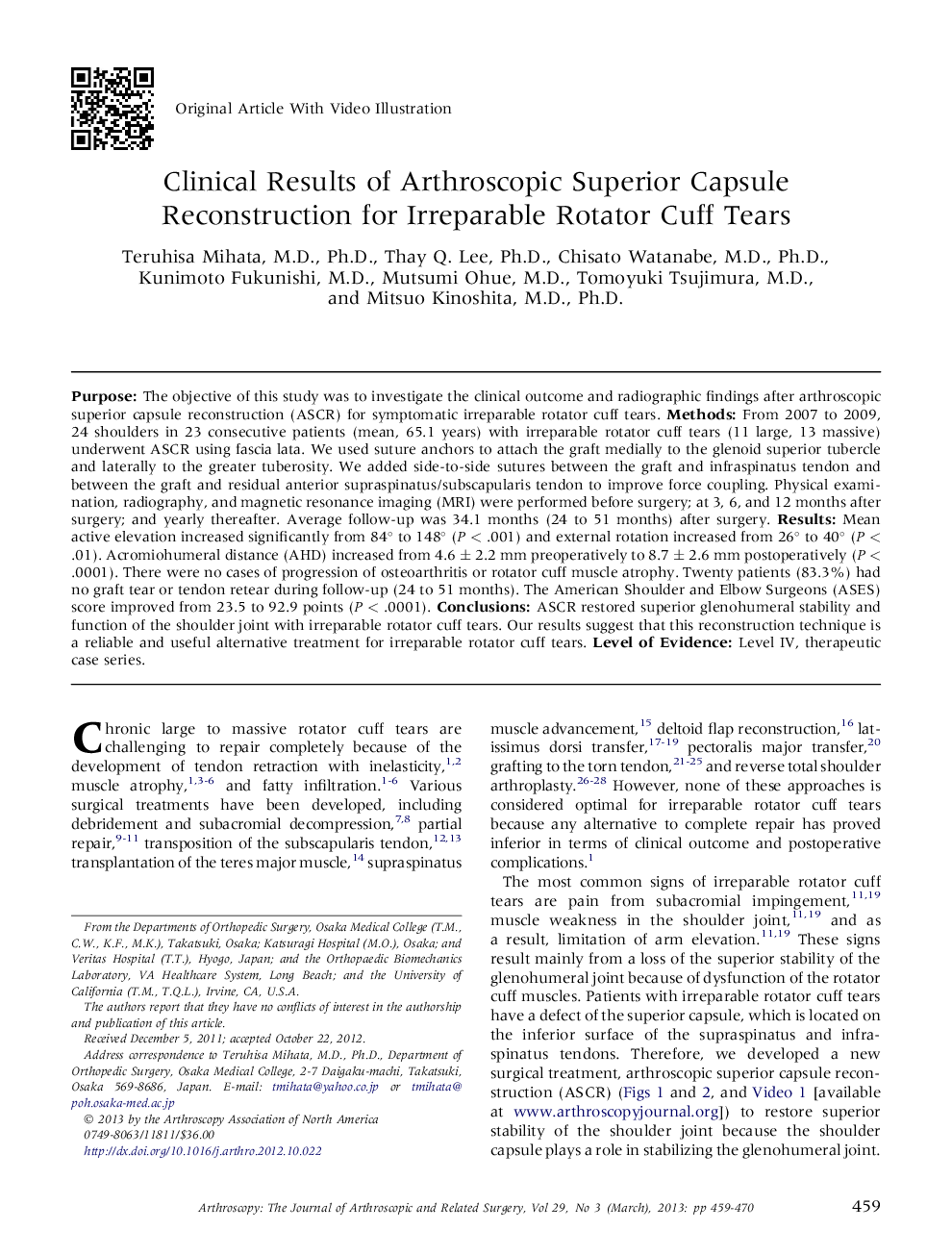| Article ID | Journal | Published Year | Pages | File Type |
|---|---|---|---|---|
| 4044072 | Arthroscopy: The Journal of Arthroscopic & Related Surgery | 2013 | 12 Pages |
PurposeThe objective of this study was to investigate the clinical outcome and radiographic findings after arthroscopic superior capsule reconstruction (ASCR) for symptomatic irreparable rotator cuff tears.MethodsFrom 2007 to 2009, 24 shoulders in 23 consecutive patients (mean, 65.1 years) with irreparable rotator cuff tears (11 large, 13 massive) underwent ASCR using fascia lata. We used suture anchors to attach the graft medially to the glenoid superior tubercle and laterally to the greater tuberosity. We added side-to-side sutures between the graft and infraspinatus tendon and between the graft and residual anterior supraspinatus/subscapularis tendon to improve force coupling. Physical examination, radiography, and magnetic resonance imaging (MRI) were performed before surgery; at 3, 6, and 12 months after surgery; and yearly thereafter. Average follow-up was 34.1 months (24 to 51 months) after surgery.ResultsMean active elevation increased significantly from 84° to 148° (P < .001) and external rotation increased from 26° to 40° (P < .01). Acromiohumeral distance (AHD) increased from 4.6 ± 2.2 mm preoperatively to 8.7 ± 2.6 mm postoperatively (P < .0001). There were no cases of progression of osteoarthritis or rotator cuff muscle atrophy. Twenty patients (83.3%) had no graft tear or tendon retear during follow-up (24 to 51 months). The American Shoulder and Elbow Surgeons (ASES) score improved from 23.5 to 92.9 points (P < .0001).ConclusionsASCR restored superior glenohumeral stability and function of the shoulder joint with irreparable rotator cuff tears. Our results suggest that this reconstruction technique is a reliable and useful alternative treatment for irreparable rotator cuff tears.Level of EvidenceLevel IV, therapeutic case series.
